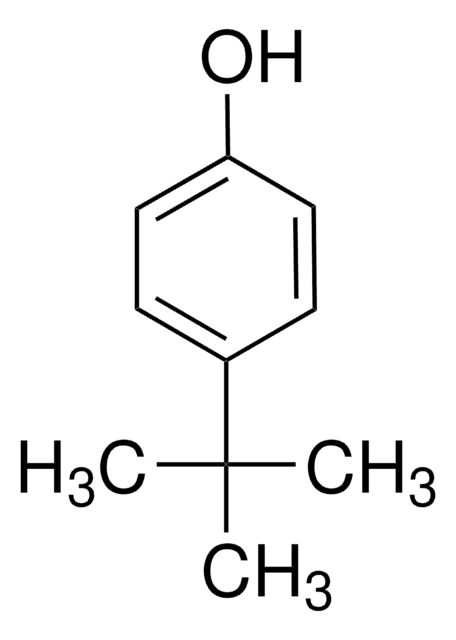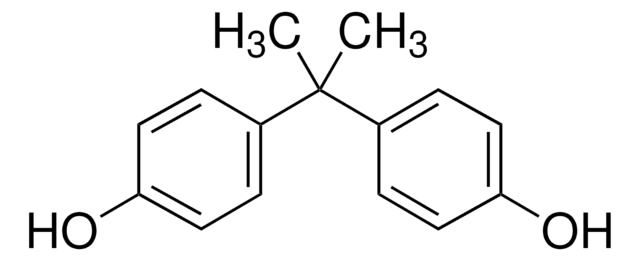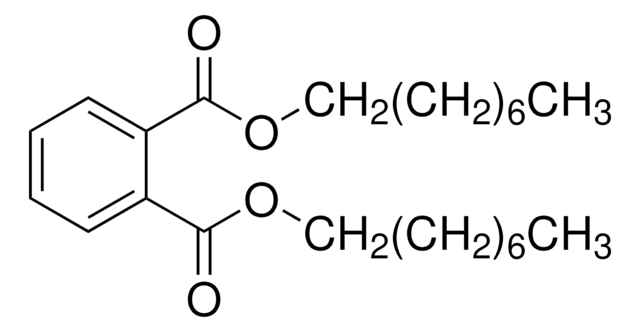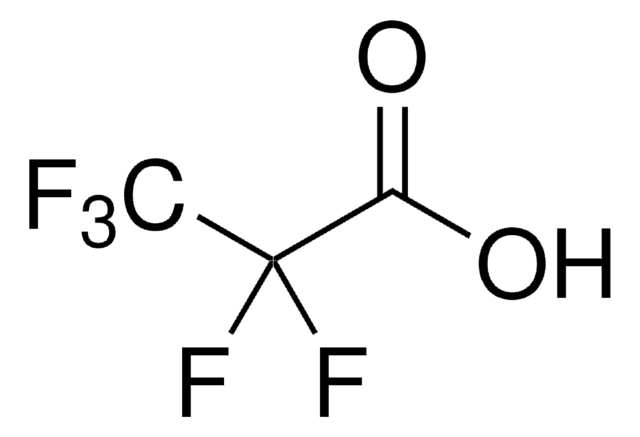506761
4-tert-Butylphenol
PESTANAL®, analytical standard
About This Item
Produits recommandés
Qualité
analytical standard
Pression de vapeur
1 mmHg ( 70 °C)
Gamme de produits
PESTANAL®
CofA (certificat d'analyse)
current certificate can be downloaded
Conditionnement
ampule of 1000 mg
Technique(s)
HPLC: suitable
gas chromatography (GC): suitable
Point d'ébullition
236-238 °C (lit.)
Pf
96-101 °C (lit.)
Densité
0.908 g/mL at 25 °C (lit.)
Application(s)
agriculture
cleaning products
cosmetics
environmental
flavors and fragrances
food and beverages
personal care
Format
neat
Température de stockage
2-30°C
Chaîne SMILES
CC(C)(C)c1ccc(O)cc1
InChI
1S/C10H14O/c1-10(2,3)8-4-6-9(11)7-5-8/h4-7,11H,1-3H3
Clé InChI
QHPQWRBYOIRBIT-UHFFFAOYSA-N
Informations sur le gène
mouse ... Esr1(13982)
rat ... Ar(24208)
Vous recherchez des produits similaires ? Visite Guide de comparaison des produits
Description générale
Application
Informations légales
Mention d'avertissement
Danger
Mentions de danger
Conseils de prudence
Classification des risques
Aquatic Chronic 1 - Eye Dam. 1 - Repr. 2 - Skin Irrit. 2
Code de la classe de stockage
11 - Combustible Solids
Classe de danger pour l'eau (WGK)
WGK 3
Point d'éclair (°F)
235.4 °F - closed cup
Point d'éclair (°C)
113 °C - closed cup
Équipement de protection individuelle
dust mask type N95 (US), Eyeshields, Gloves
Faites votre choix parmi les versions les plus récentes :
Déjà en possession de ce produit ?
Retrouvez la documentation relative aux produits que vous avez récemment achetés dans la Bibliothèque de documents.
Les clients ont également consulté
Notre équipe de scientifiques dispose d'une expérience dans tous les secteurs de la recherche, notamment en sciences de la vie, science des matériaux, synthèse chimique, chromatographie, analyse et dans de nombreux autres domaines..
Contacter notre Service technique














